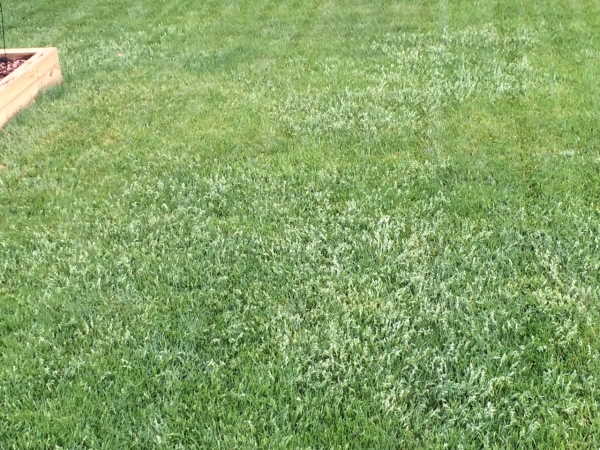During the spring and early summer months, many homeowners start to notice an odd type of grass, often considered to be a weed, popping up within the lawns. It is lighter green in color, has rough textured leaves and bunches of seeds that form at the top. While these patches may resemble a weed, and are often considered to be such, it is most likely annual or perennial bluegrass.
Annual Bluegrass
Annual bluegrass becomes a nuisance in the late spring, during its final reproductive stage when begins to produce seed. This is a 2-3 week period, usually in May when the bright green grass produces a seed head that is capable of producing hundreds of seeds per plant. At this point, annual bluegrass is about to die off and will no longer be an issue; however, the issue that does remain is the seed that falls to the soil and will start the annual cycle over again when it begins its germination process in late summer or early fall.
Perennial Bluegrass
Perennial bluegrass is the bluegrass that lives for many seasons and will produce new seed, as well as grow back during future seasons. Perennial bluegrass is very invasive and has the potential to take over a lawn if allowed to do so.
Controlling Annual & Perennial Bluegrass
Due to the nature of annual or perennial bluegrass, traditional weed control applications are not effective. This bluegrass, although not ideal, is a type of grass and traditional weed control applications are not intended to kill grass.
The best way to control bluegrass that is scattered throughout the entire lawn is to choke it out. It is recommended to apply a pre-emergent in late summer (Mid-August) to prevent new bluegrass seed from germinating. Unfortunately it will also prevent all other types of grass seed from germinating as well, so this may impact any plans for seeding this fall with blends of fescue. This will likely be a continuous process over several years to effectively choke out the bluegrass.
For bluegrass that is contained to a small section, the best method would be to kill the section off using a non-selective herbicide, such as round-up, and then seed the area with high quality fescue grass seed. This may be a continuous process that may need repeating in future years and possibly different areas of the lawn until the bluegrass has been completely eradicated.
Sum it up
Mother Nature is just trying to be nice by helping you to reseed your lawn, even if you don’t want it seeded. The Annual or Perennial Bluegrass will need to be continuously choked out with fall pre-emergent applications, aeration and seeding, and possibly the use of non-selective herbicides in extreme or sporadic cases.
It is always a good idea to consult with a lawn care professional and ask any questions you may have. Look around, ask friends or family, and research companies on the Better Business Bureau to find a company that you can trust.

